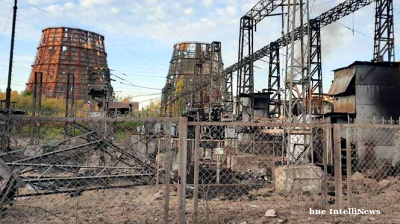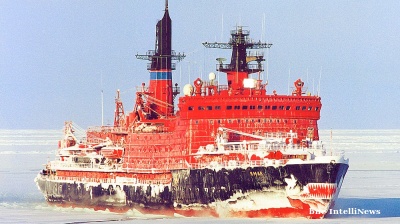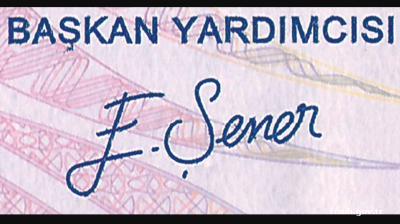The Central Bank of Russia (CBR) released draft monetary policy guidelines on August 11 outlining its views on Russia’s economy for the rest of the year that highlight the twin goals of “protecting the ruble and price stability” as well as fighting inflation.
“The goal of monetary policy is to protect the ruble and ensure its strength through maintaining price stability. The inflation target is annual inflation of close to 4%,” the CBR said in its report.
“Price stability is a key element of macroeconomic stability along with a well-balanced fiscal policy... Debt and equity financing is becoming more affordable, including owing to lower interest rates… Thus steadily low inflation promotes favourable conditions for investment and economic development. In addition, price stability in the country increases confidence in the ruble as a currency for international settlements and contracts.”
The CBR went on to outline three scenarios going forward but all of them assume the effects of the increasingly fractured world will have an impact on Russia. In the CBR’s worst-case scenario, it argues that inflation will remain persistent, forcing central banks around the world to continue growth-killing high interest rates that “might entail a global crisis, the scale of which might be comparable with the 2007-2008 crisis.”
CBR Governor Elvia Nabiullina has consistently been predicting there is a real danger of another global crisis as a result of the sanctions-related distortions introduced into the global economy as a result of Russia’s clash with the West.
Below find the text from the report of the CBR’s three scenarios:
Baseline Scenario: In the baseline scenario, the world economy continues to develop within the already existing trends, provided there are no new shocks. Advanced economies’ central banks will pursue tight monetary policies seeking to bring inflation back to targets. As a result, the expansion of the world economy will slow down, limiting price growth in most commodity markets. The sanctions enacted against the Russian economy will remain over the entire forecast horizon. Russian export goods will still be sold in the global market with discounts.
In 2024-2025, the transformation of the Russian economy will progress further. In 2026, it will return to a balanced growth rate of 1.5-2.5%.
Inflation will decrease to the target at the end of 2024 and stay close to 4% further on. This will be facilitated by the Bank of Russia’s monetary policy. In its baseline scenario, the Bank of Russia forecasts that the average key rate will be in the range of 7.9-8.3% per annum in 2023, 8.5-9.5% per annum in 2024 and 6.5-8.5% per annum in 2025. By 2026, the Bank of Russia will return the key rate to its long-term neutral range estimated at 5.5-6.5% per annum.
Stronger Fragmentation The alternative Stronger Fragmentation scenario assumes that the world economy will become more fragmented, with increasingly more countries dividing into blocks. This process began in 2018-2019, and in 2022 was exacerbated by intensifying geopolitical tensions. If the global fragmentation becomes stronger, countries will be seeking to localise their production capacities in their territories, limit competitors’ access to domestic economies and technologies, and establish partnerships with neighbouring countries and geopolitical allies.
The pressure of the sanctions on the Russian economy might become more severe. The division into regional blocks will have an adverse effect on global trade, hampering the growth of the world economy and provoking a decline in prices in global commodity markets. As a result, the growth rates of the Russian economy in 2024-2025 will be lower than those in the baseline scenario.
The shrinkage of imports due to stronger sanction pressure, coupled with domestic production constraints associated with a shortage of imported components, will exacerbate the gap between demand and supply, pushing up prices. In the case of the Stronger Fragmentation scenario, inflation will again rise in 2024 at a moderate pace of up to 5.0-7.0%. To bring inflation back to the target, the Bank of Russia will have to pursue tighter monetary policy in 2024-2025 compared to the baseline scenario. Inflation will return to the target later, namely in 2025.
Risk scenario The alternative Risk scenario assumes that inflation pressure in advanced countries will persist, forcing the central banks to tighten their monetary policies further. Rapid increases in their policy rates will worsen the situation for financial institutions. Materialisation of interest rate risk in the financial market might augment the uncertainty and lead to an extensive withdrawal from risky assets. This might entail a global crisis, the scale of which might be comparable to the 2007-2008 crisis. Deglobalisation in this scenario will magnify the negative effects of the financial crisis. The sanction pressure on the Russian economy might intensify. If the largest economies face a recession, global demand will contract. Oil prices will plummet.
Output in Russia’s economy will be shrinking for two years. The economy will start to recover as late as 2026, growing by 2.0-3.0%, and return to a balanced growth path beyond the forecast period.
In the case of the Risk scenario, inflation will speed up to 11-13% in 2024 due to more severe supply shocks and a weaker ruble. To prevent inflation from spiralling out of control, the Bank of Russia will be forced to tighten its monetary policy considerably, with the key rate averaging 12.5-13.5% per annum in 2024. In 2025, in order to limit inflation risks and ensure the return of inflation to the target, the Bank of Russia will also pursue tighter monetary policy than under the baseline scenario. Inflation will return to the target in 2025.
Features

Ukraine’s growing energy crisis promises a cold and dark winter
Since the summer, Kyiv has changed tactics. Given the almost complete failure of Western oil sanctions to curb Russian oil exports, it has been targeting Russian oil refineries. The Kremlin has struck back, targeting Ukraine's power system.

Russia, China sign off on Northern Route shipping deal to slash global freight times
Russia and China have signed a landmark agreement to develop and commercialise the Northern Sea Route (NSR), after Beijing tested the route last month, that could slash Europe-Asia cargo transit times and challenge the primacy of the Suez Canal.

Sri Lanka’s economic escape
Sri Lanka’s recovery over the past year reads like a narrow escape rendered into a cautious, albeit unfinished success story.

BEYOND THE BOSPORUS: Investigators feel collar of former Turkish central bank deputy governor
Regime gangs continue to hustle for gains. Some Erdoganist businessmen among the losers.


